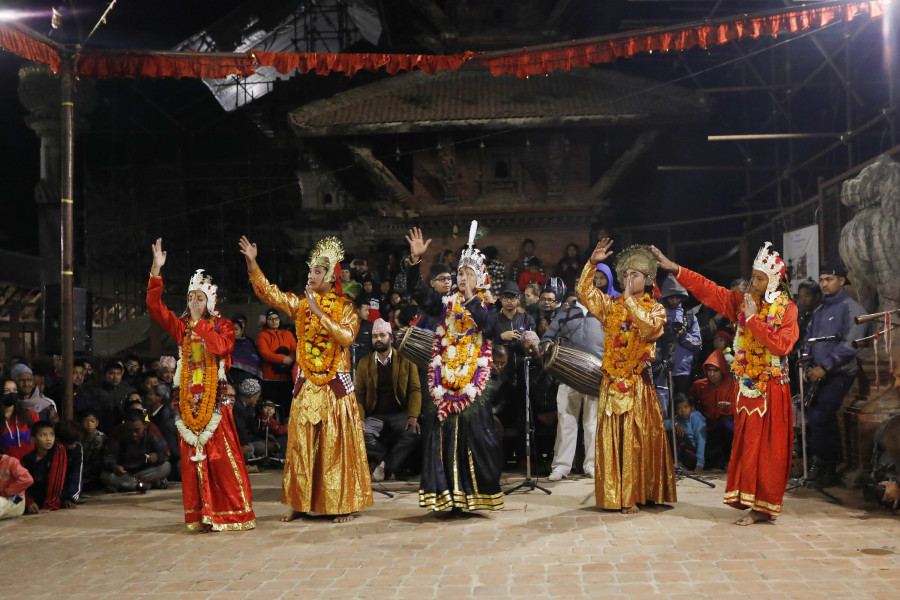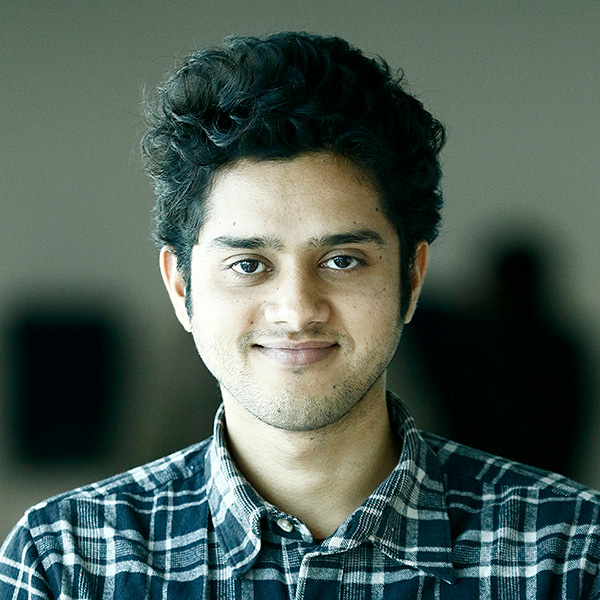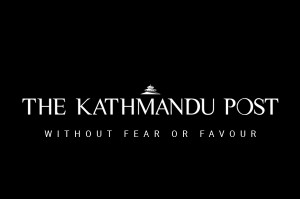Valley
Despite lack of resources, the Kartik Nach plays on
A few minutes before the clock struck seven, a thumping drum, punctuated intermittently by sharper notes, travelled through the alleyways around the Patan Durbar Square on Tuesday evening. A crowd of nearly a hundred people had gathered at the Kartik Dabali, at the centre of which were four torches placed in a perfect square.
Timothy Aryal
A few minutes before the clock struck seven, a thumping drum, punctuated intermittently by sharper notes, travelled through the alleyways around the Patan Durbar Square on Tuesday evening. A crowd of nearly a hundred people had gathered at the Kartik Dabali, at the centre of which were four torches placed in a perfect square.
On the left corner was a band of four—two playing the dholak, a large drum, and two mujhuras, small rhythmic cymbals that clang together. The crowd jittered in anticipation, jostling to get to the front, with cell phones and cameras in hand. A cast of 12 emerged through the crowd, all of them in colourful garb, with multiple garlands and crowns, bowing to the images of Narsingha and Kali, among others. And so began the legendary dance.
Currently, in its 377th year, the Kartik Nach shows few signs of abating. Rather, the last few years have seen increased and enthusiastic participation from young people, according to Kiran Chitrakar, chairperson of the Kartik Nach Conservation Committee. Whereas previously the dance would be performed mostly by middle-aged and elderly devotees, 80 percent of the artists performing range from 13 to 25 years.
“I am really excited about today’s show,” said Yujen Shakya, 19, before taking the stage on Tuesday. “I have been doing this every year since I was 13. It feels good to continue the tradition started by our forefathers.”
Initiated by Siddhi Narsingh Malla in 1641, the Kartik Nach takes place every year during the titular month of Kartik in Patan. The dance honours the god Kartikeya and was born out Malla’s love for the arts. Told day after day in an episodic format, the dance acts out the tales of the Shreemad Bhagavad Geeta and the Swasthani, two principal Hindu texts. The dance is a moral tale, a classic story of good triumphing over evil. And accordingly, it requires a large audience that can learn from it. “The drama portrays the cause of past events and their repercussions on the present and the future,” says Chitrakar.
Though the Nach has gone through numerous changes in its three-century history, much remains the same.
The structure of the dance as instituted by Malla remains the same, although Nepal Bhasha has substitutes the Sanskrit to appeal to a more lay audience. The duration of the play has changed often—first being lengthened to a full lunar month, then shortened to a week due to budget concerns and more recently, it was down to two days.
This year, it will go on for 12 days, a seeming compromise between a month and two days. However, if finances remain the same, the Kartik Nach might lose its lustre in a few years’ time.
The Kartik Nach continues till November 23, culminating in a final showdown between Narsingha, the lion-headed Vishnu avatar, and the demon Hiranyakashipu.
“Lalitpur Metropolitan City has allocated Rs200,000 for this year’s event and we’ve received funds from other local and international donors, but that still doesn’t suffice to support a crew of about 100 individuals,” said Chitrakar. “The total cost is well over Rs500,000, even though we’ve tried to keep it as economical as possible. If this continues, nobody can say whether we can keep up the tradition after a few years.”




 5.39°C Kathmandu
5.39°C Kathmandu









%20(1).jpg&w=300&height=200)

